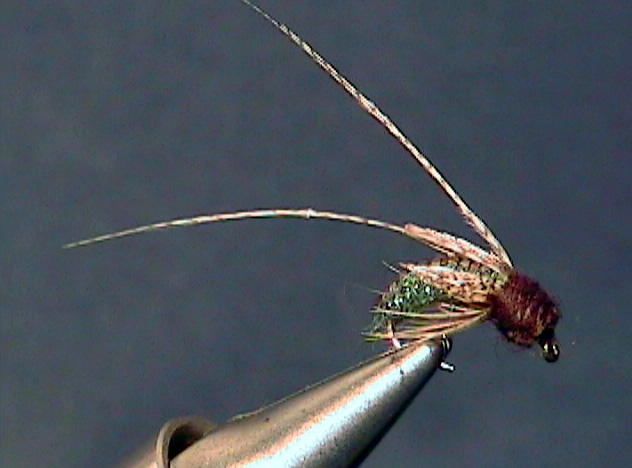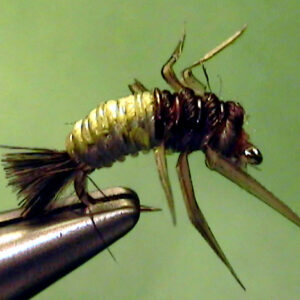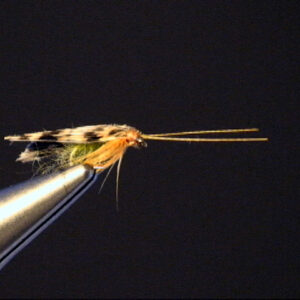Hook Size: 18
The Perfect Fly Little Sister Caddis Pupa trout fly imitates the Little Sister Caddis larva stage of life. Their larvae live in a case type shelter until the pupa is formed just prior to the hatch. Just prior to the hatch, the pupa comes out of its case and accents from the bottom of the stream to the surface where it emerges into an adult. This makes them easy prey for trout. They should be fished from the bottom to the surface of the water by first allowing the fly to sink to the bottom and then bringing the fly up to the surface using the current and the tip of the rod.
The pupae swim to the surface to hatch. They are very available for the trout to
eat at that time. This is the best time to imitate the Little Sister Caddisflies or
Sedges, whichever you prefer to call them.
The problem is being able to determine when a hatch is underway. Often the
caddisflies are emerging at the same time they are depositing their eggs. If not,
you will probably not notice the hatch is taking place or see the fish feeding on
them. Trout eat them as they swim (aided by air bubbles) to the surface.
Occasionally the trout will jump out of the water eating the pupae and that’s one
clue but that’s not the usual situation. The most you are able to see is usually
just a flash of the side of a trout feeding below the surface. The hatch is usually
over before many anglers even recognize the Little Sisters are hatching.
The hatch usually happens in the late afternoon but later on in the year as the
water warms, it may not occur until dusk. As with most other caddisfly hatches,
they start earlier and last longer under inclement weather conditions. Cloudy,
rainy overcast days are the best types of conditions.
Presentation:
Imitations of the pupae should be presented in the same manner as the larva
imitation except that you would not weight the fly as much, if any. You want the
fly to swing downstream near the bottom and then rise to the surface. The
naturals rise from the bottom to the surface to hatch and that’s exactly what you
want your pupa imitation to do.
Cast slightly down and across and stop the swing of the rod when the fly is
directly downstream from your position. If you determine that they are emerging
in a particular area of the riffles or run, then you would want your fly to rise to the
surface in that same area.
To do this, it’s best to wade out in the stream directly above but keeping a good
safe distance above the emerging pupae. You have to stay well above the
emerging caddisflies or you would spook any trout feeding on them. You can
strip some line out in the current of the riffles and not have to make a very long
cast if you prefer. When the fly is near the bottom in the same area they are
hatching, stop the swing and hold the rod tip up at about a 45 degree angle from
the horizon. The fly should rise to the surface in the surface. Most of the takes
come about the time the fly is getting near the surface or when it just reaches the
surface.


